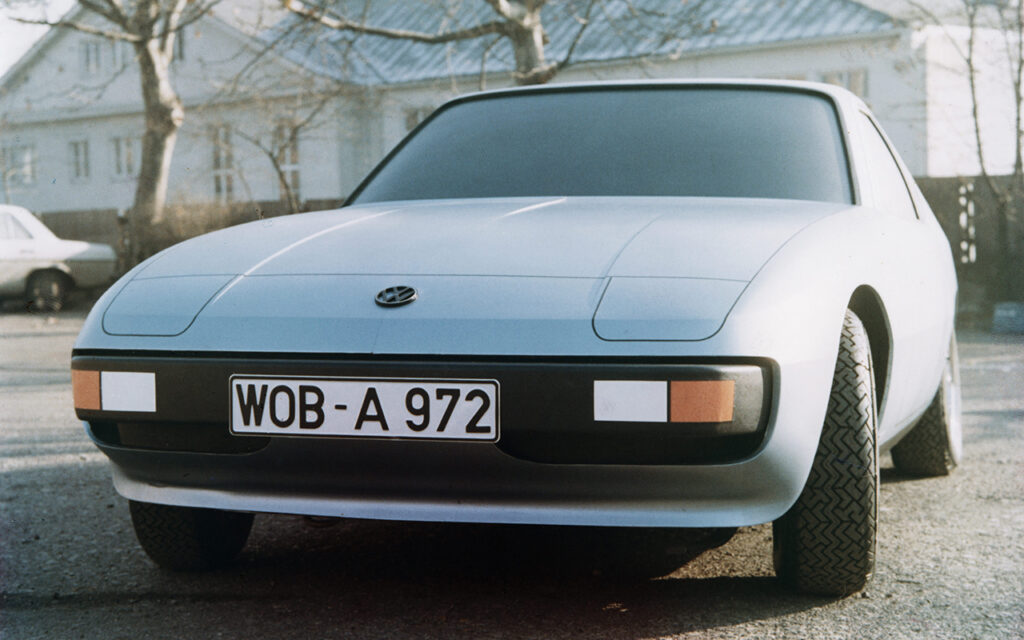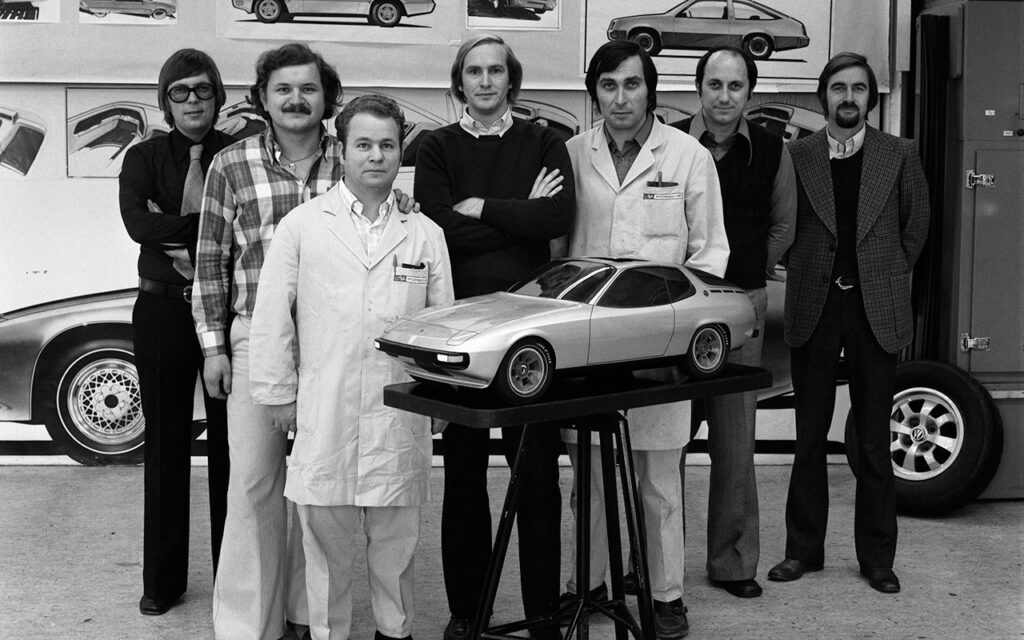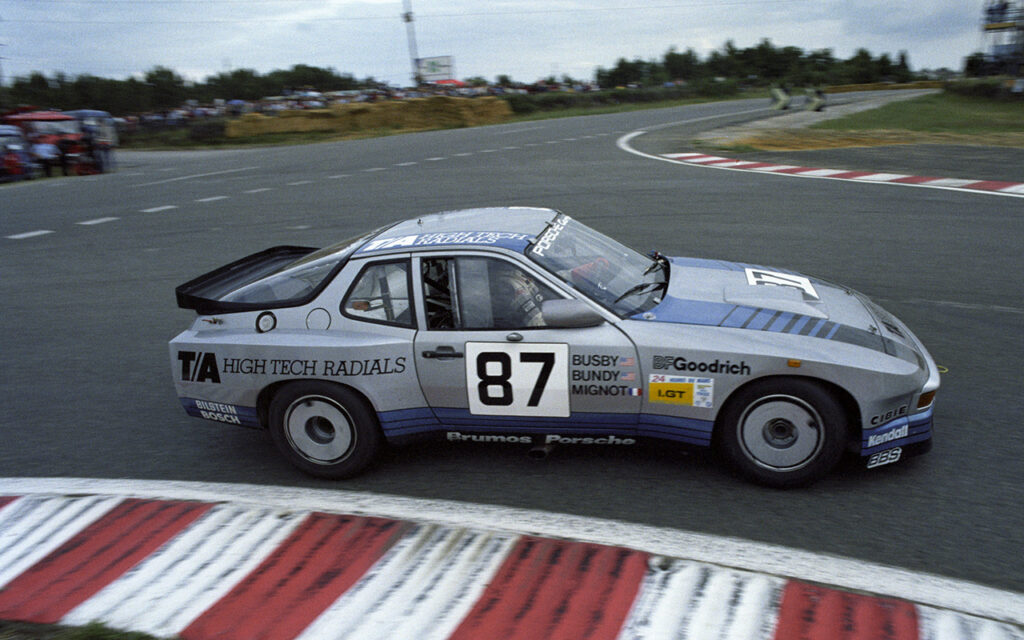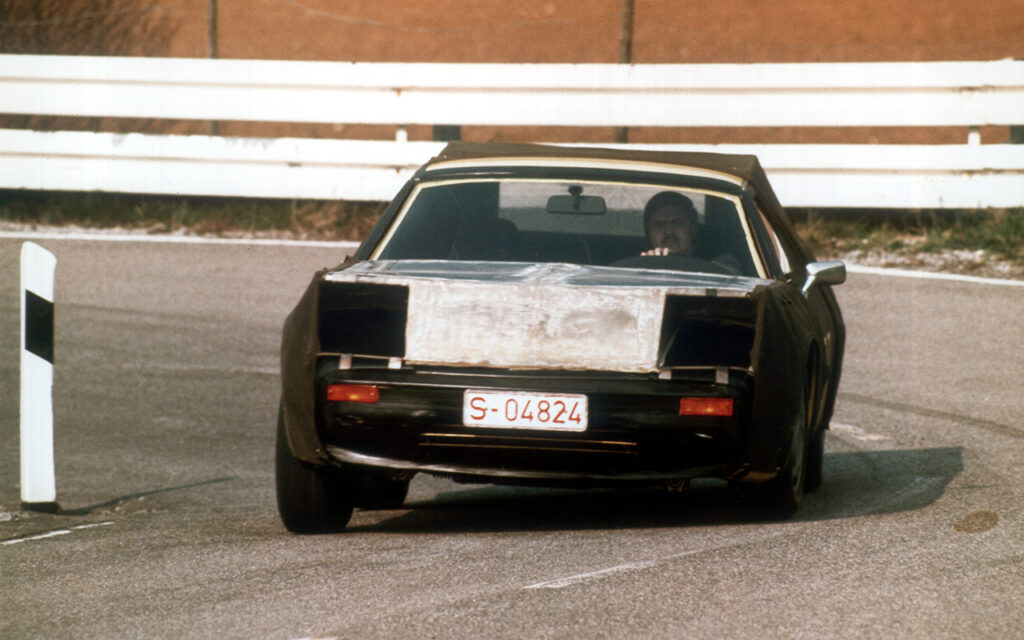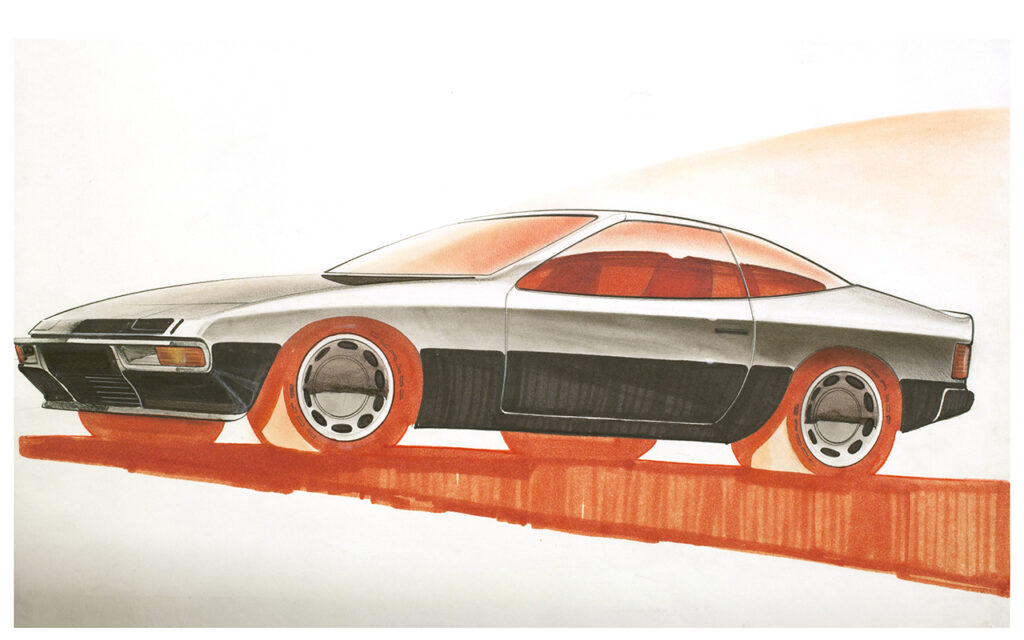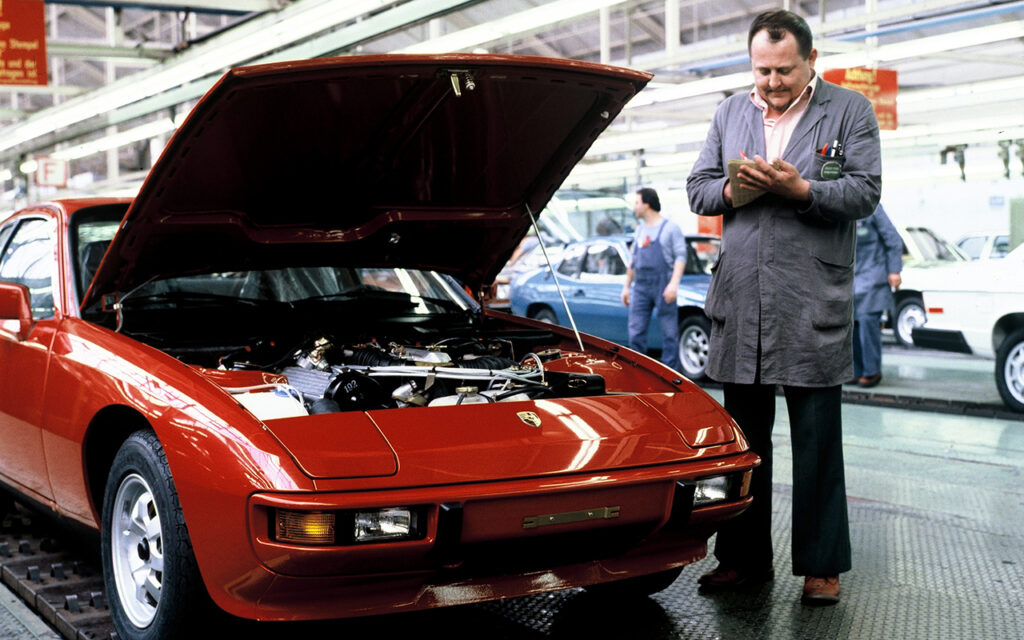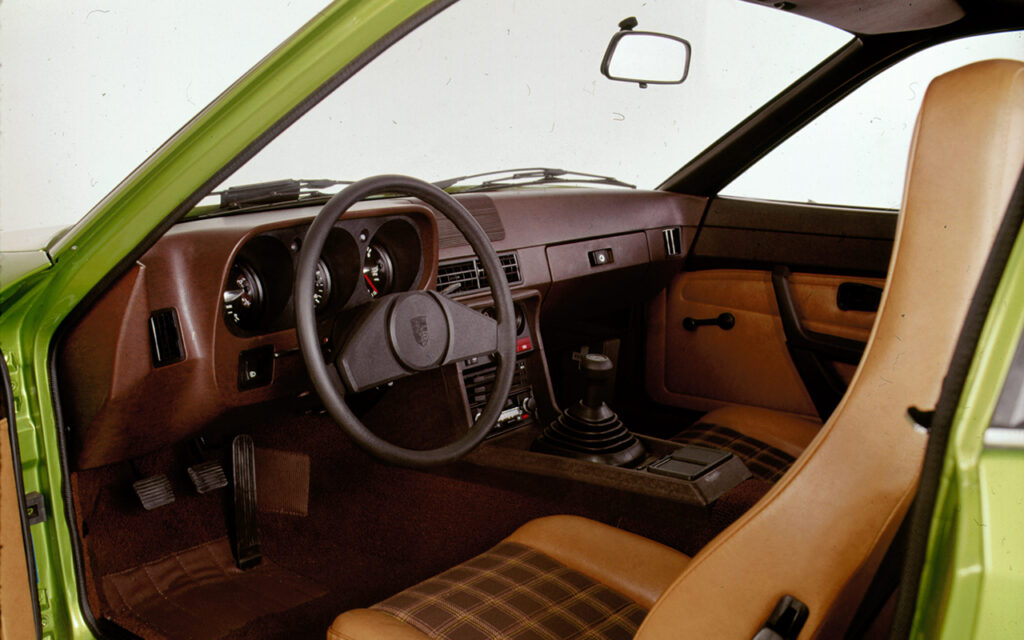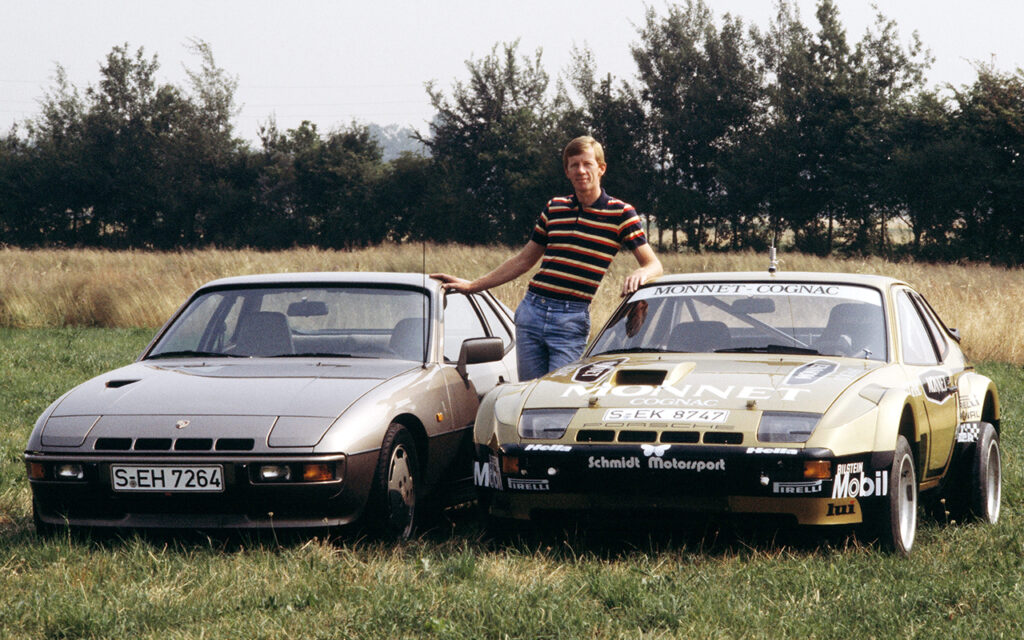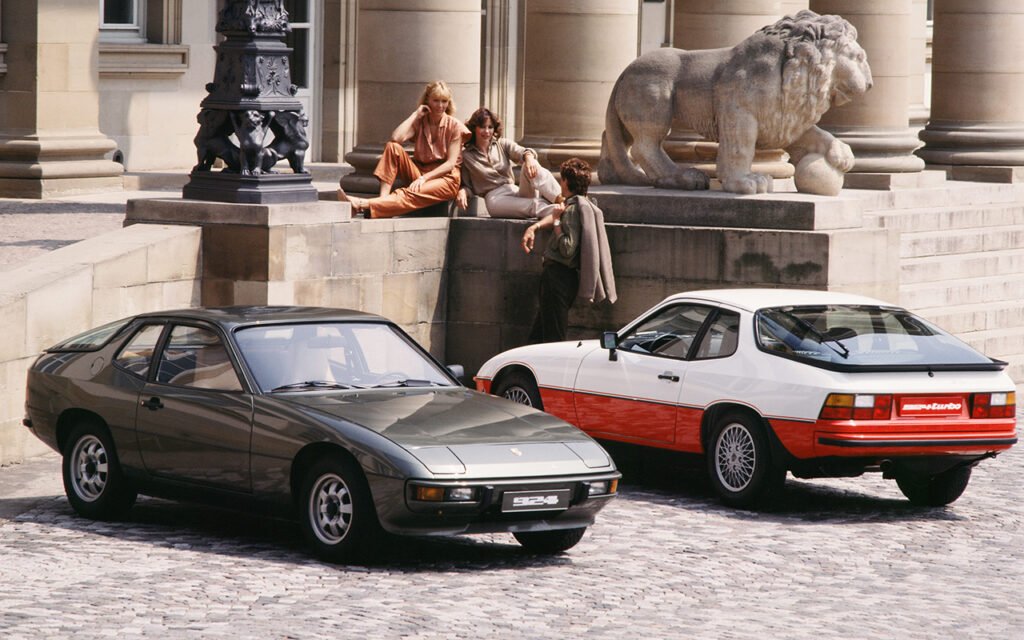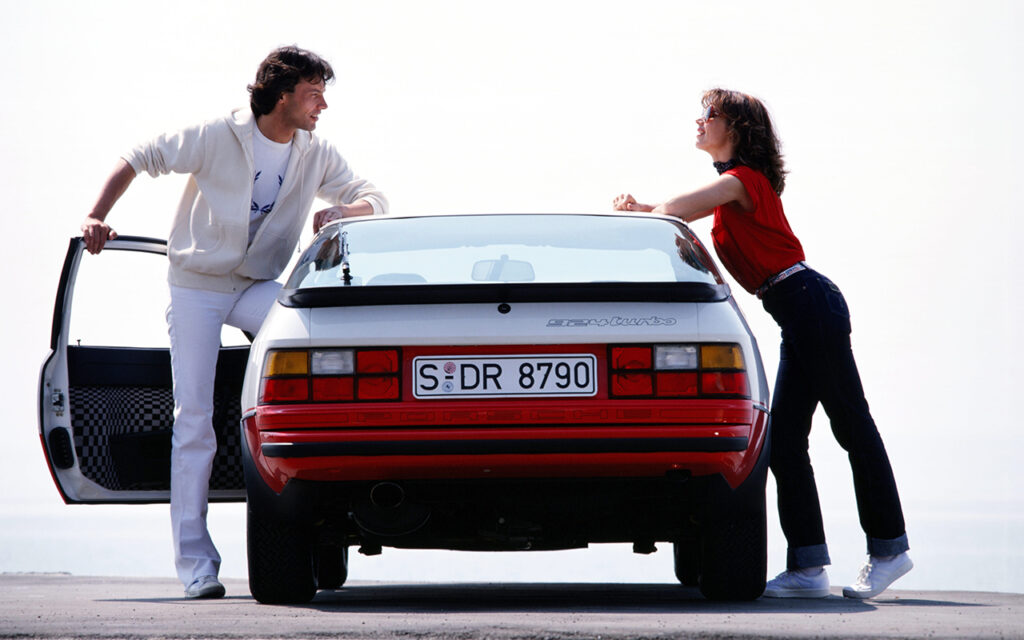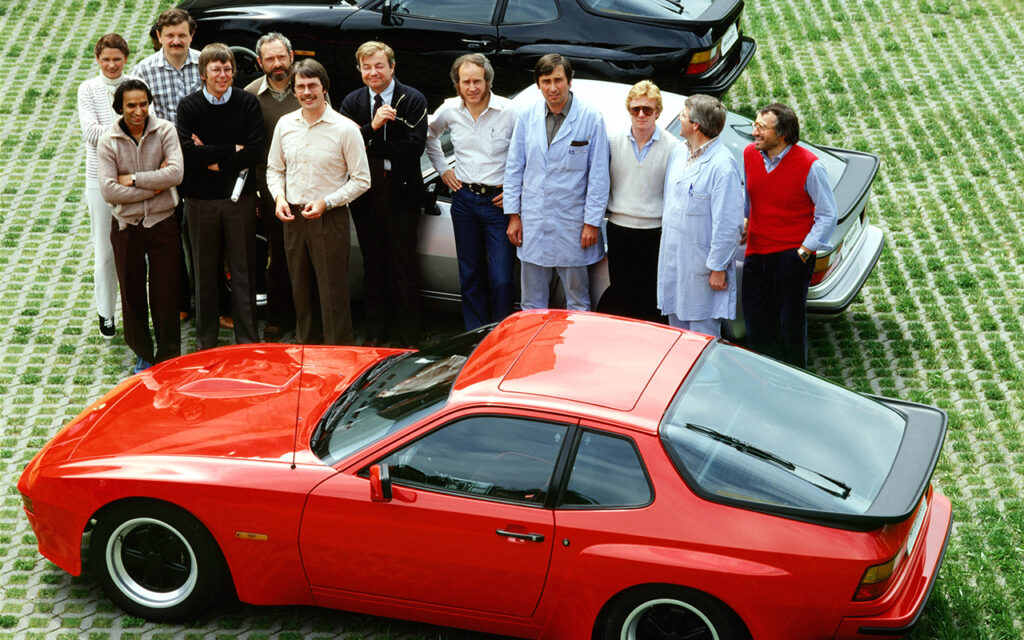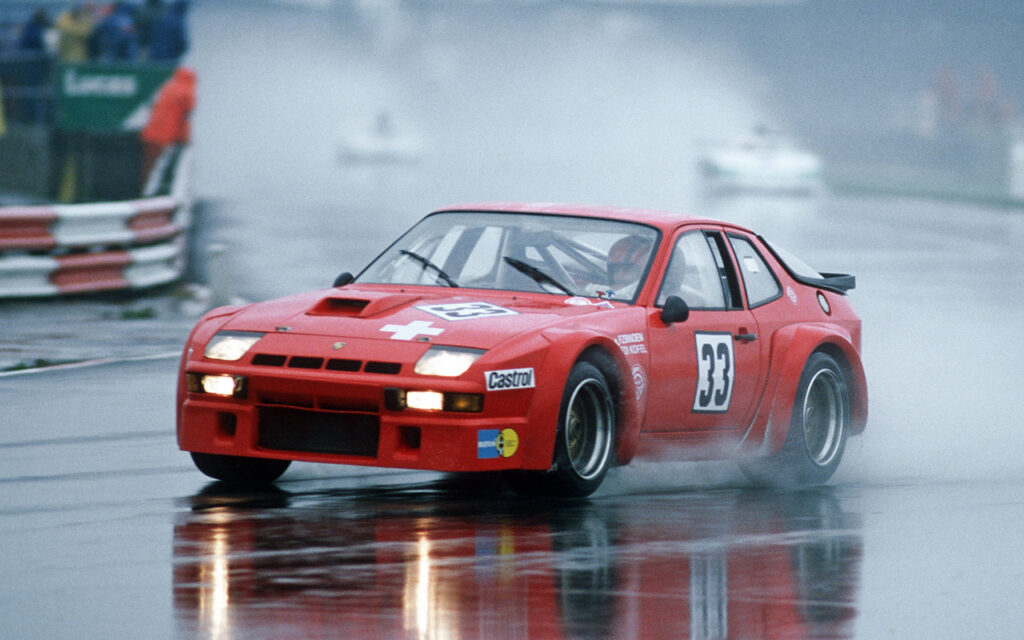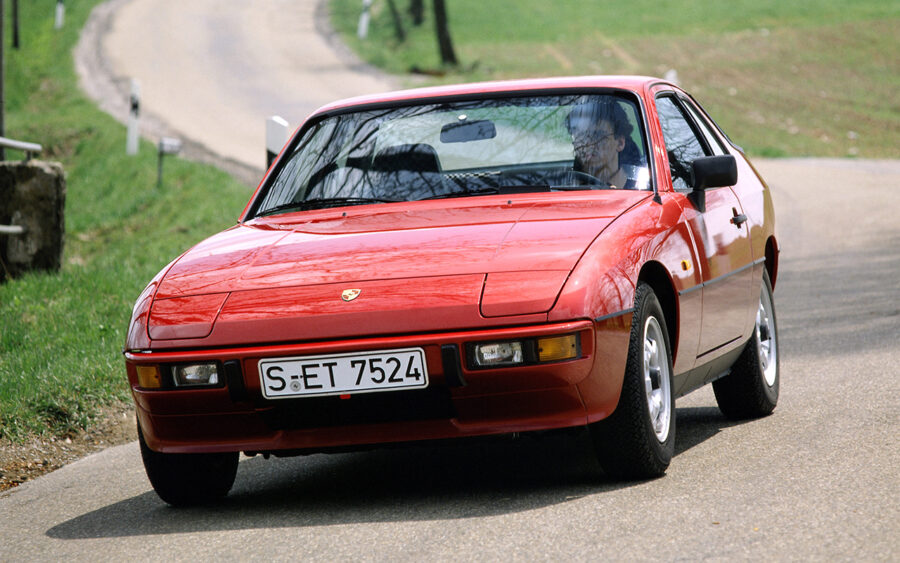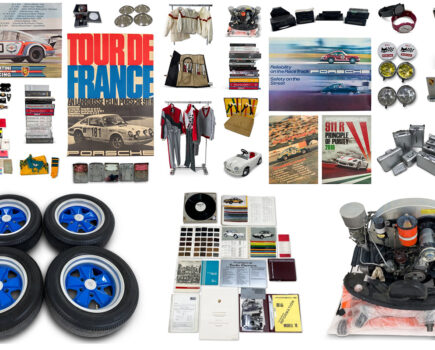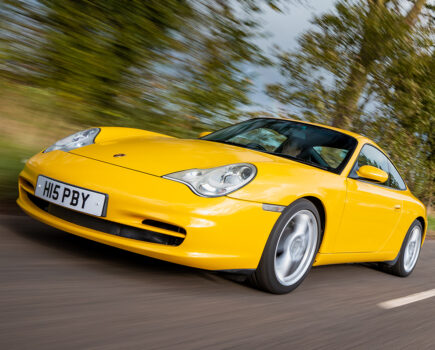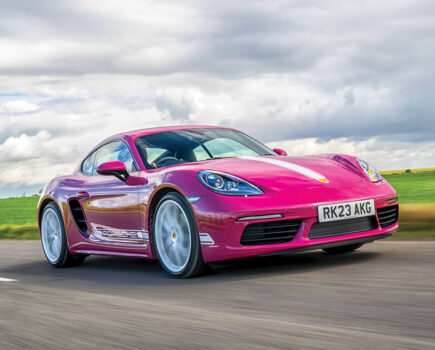Once the ugly duckling of the old Porsche world, the 924 is now enjoying its time in the classic spotlight. Here’s how it got there
Words: David Sutherland
Until about ten years ago, the joke about filling a fuel tank to the very top and doubling the host vehicle’s value applied to the 924. It was the ‘cheap’ Porsche, occupying space in a seemingly parallel universe to the one where 911s clung tenaciously to their values and excelled in industry polls focusing on depreciation.
The 942 S, 944 and 968 all evolved from the first 924 and maintained similar status in the used car market, becoming the blue-collar side of Zuffenhausen in stark contrast to the Boss-suited 911. Far from being ‘the great unloved’, they were a godsend to the impecunious Porsche fancier.
For some, a cheap four-pot ‘transaxle’ was an expendable motoring essential: buy for a song, run on a shoestring and, when the threat of uneconomic repair loomed, recycle back into the grass roots Porsche community where, hopefully, life would be breathed into the car by a fresh and willing (but, hopefully, low spending) next owner. Failing that, the Porsche’s parts might help prolong another car’s service life.
Alas, that once exhaustible supply of low priced, front-engined, four-cylinder, water-cooled Porsches has all but dried up — the £1,000 prospect worth a gamble is now the £10,000 polished forecourt find. Indeed, you’re now more likely to see 924s entered into local classic car auctions than crying out for a home on eBay. Moreover, the international classic car market currently has the hots for good 924s. As if to prove the point, US auction house, RM Sotheby’s, recently coaxed bids on an 11,000-mile 1980-registered 924 up to nearly $54,000 (about £41,500).
Unlike the 911, which seems impervious to the effect of price rises, cost has always been a key issue with the front-engined four, even from the days when it was still a sketch on a designer’s pad. The story is best taken up by looking at the position Porsche found itself in by the mid-1970s: a low-volume (and hence vulnerable) carmaker offering rear-engined and mid-engined models manufactured from few common parts. The 911 was over a decade old, while the complicated and not entirely satisfactory 914 (a joint project with Volkswagen) had dated quickly. Porsche wanted to ramp up production levels to achieve a more efficient cost base, but designing and engineering a new model from scratch was beyond the company’s financial resources.
Porsche’s thriving consultant engineering division at Weissach, however, had designed a coupe powered by a two-litre front-mounted engine and a gearbox integrated with the rear axle for transformed weight distribution. Though intended for Volkswagen, Wolfsburg canned the project at a late stage, instead developing the Golf-based Scirocco, citing the 1973 oil crisis and a string of new industry regulations as reasons for backing out.
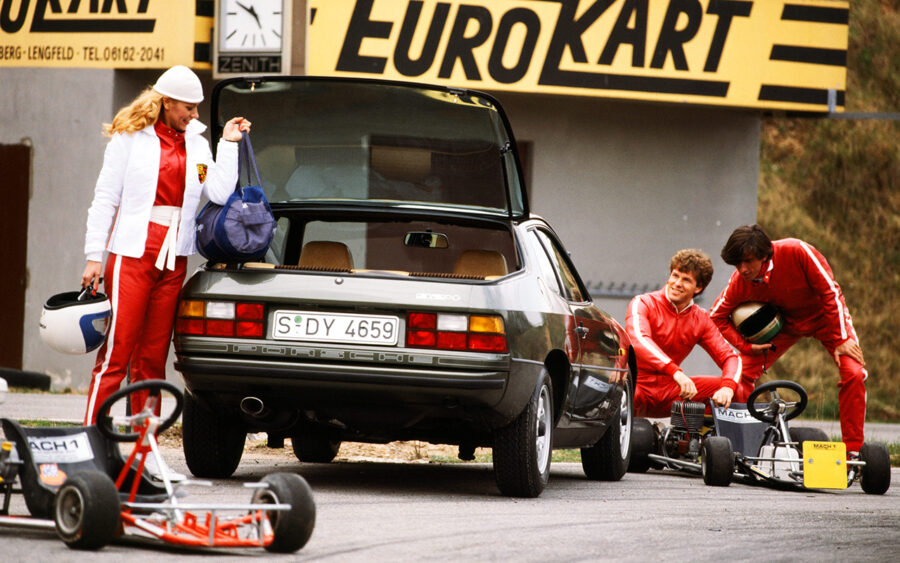
This reluctance to proceed with what was originally dubbed Project 425 effectively handed Porsche a readymade replacement for the 914. The preferred route for some at Zuffenhausen would have been to incorporate more Porsche engineering pedigree, but continuing along the chosen path was a cheaper option at a time when the future of sports cars looked bleak, largely thanks to the depressed economic climate and long-standing rumours concerning the apparent intention of North American federal safety legislators to outlaw convertibles.
Even so, Porsche couldn’t afford the price VW wanted for the 425’s design. After much deliberation, to avoid the project being canned and the 30,000,000DM spent on its development amounting to nothing, a deal was struck whereby VW would manufacturer the resulting production model in the Audi/NSU works at Neckarsulm and Porsche would buy each finished car — now badged 924 — from VW. This joint parentage explains the variation of the EA831 two-litre, four-cylinder engine (equipped with a Porsche cylinder head), as well as the use of Golf front strut suspension and steering, VW K70 brakes and even the rear suspension torsion bars from the Beetle. Inside, switchgear and instruments from contemporary Audis and VWs reigned supreme.
Cleverly, the VW joins didn’t show. Helped by the Porsche badge and then modern looks, Autocar described the 924 as “a junior supercar”. The two-litre, single-cam engine, canted over thirty degrees and fed by Bosch K-Jetronic fuel injection, produced 123bhp and 122lb-ft torque fed through a four-speed manual or three-speed automatic gearbox. The ‘two-plus-two’ seating and opening rear screen added practicality. Importantly, the UK showroom price before any extras were added was just £7,000 (£51,500 in today’s money), which was a third less than the cheaper of the two 911s available at that time. An amazing quota of 50,000 924s were built in just twenty-six months. UK deliveries started in January 1977.
As we know, right from the start, purists couldn’t forgive Porsche for releasing a car with humble VW roots. This impacts even more than four decades on from the 924’s release — cars from Porsche’s transaxle family, possibly even the ‘lightweight’ 968 Club Sport, are still not seen as a ‘proper’ Porsche by the hardened few, though the sentiment is becoming less muttered as time goes by. In its road test of the 924 in February 1977, headlined Testing the back-to-front Porsche, Autocar, however, enthused, “In roadholding, handling and ride, the 924 has few rivals and imparts great confidence to driver and passenger alike.” Praise indeed, but not without a word of caution. “Mechanical refinement is lacking at the top end of the engine’s range and the degree of road noise is a sad disappointment, but one must remember this car is not necessarily how Porsche would have designed and engineered it for itself.”
The raid of the VW parts bin led Autocar to further contemplation of the non-Porsche origins, commenting on how the 924 “feels more like a saloon car than a sports car to drive”. On the subject of Porsche seats mixed with VW corporate minor controls, “though the configuration of the 924 may make it sound like a ‘bitsa’ car, the whole effect is harmonious and obviously well engineered.” The road test’s conclusion was favourable, not fanatical, but ended with the previously unheard criticism of a Porsche: “There are several strong rivals [Ford Capri 3000S, Triumph TR7, Lotus Esprit, Datsun 260Z and others] offering a similar specification for a lot less money.” Ouch.
In mid-1978, three years after model launch and one year on from introduction to the UK domestic market, the process of teasing the 924 away from VW began when the original Audi gearbox was replaced by a 911-derived unit, with first out on a left-and-back dogleg. Evolution continued when, in November of the same year, the 924 Turbo (a model that wouldn’t come to the UK for another eleven months) was announced.
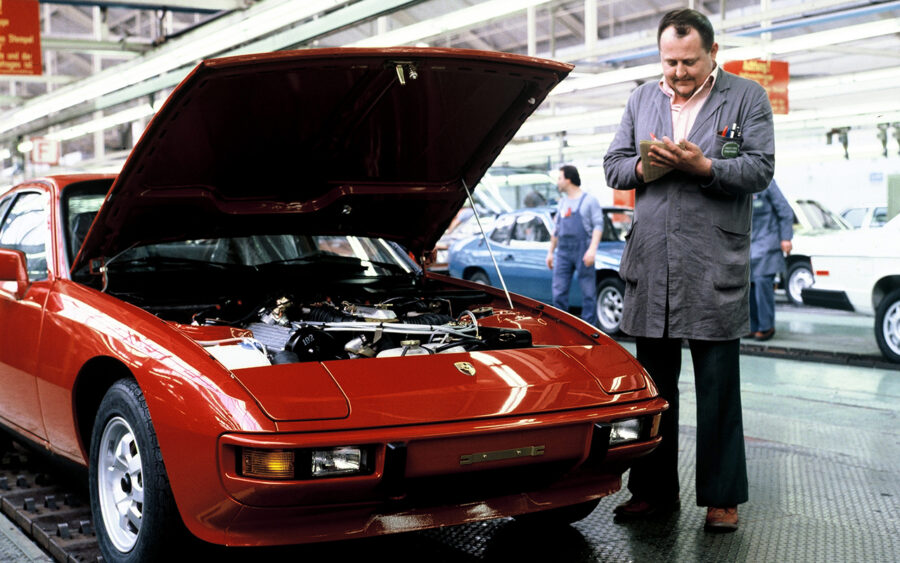
The original VW engine block and bottom end were retained, but a new cylinder head with revised combustion chambers, 3mm larger exhaust valves, and new pistons for a lower compression ratio were fitted. Other additions included a secondary fuel pump to increase delivery pressure, a recalibrated fuel injection system and a blow-off valve. The German-made Kühnle, Kopp & Kausch (KKK) turbocharger helped to deliver more than thirty percent more power and double the twisting force, allowing Porsche to claim 168bhp and 181lb-ft torque. The result was the world’s most powerful two-litre car at the time of production, racing to 62mph from rest in 7.8 seconds and topping out at 140mph.
Bilstein gas dampers and a larger brake servo added to enviable specification, but even with the extra kit, the 1,180kg Turbo weighed only fifty kilos more than the naturally aspirated 924. Unsurprisingly, USDM Turbos were less powerful (150bhp), but in all other respects, the 924 was, at last, a proper performance car. The prop and driveshafts were thickened, and the gearbox ratios changed slightly, while the springs and anti-roll bars were stiffened. The brakes were uprated with a mixture of 911 SC and 928 parts. Wheels increased in size, measuring fifteen inches in diameter and wrapped in 185/70-profile rubber, though the main exterior distinguishing marks were extra air intakes on the nose and a rear spoiler doubling up as the screen surround. A four-spoke steering wheel was introduced to the cabin.
Often mistaken for an intercooler – the 924 Turbo doesn’t make use of one – is the external oil cooler visible when the go-faster 924 is viewed head-on. The four horizontal vents between the headlights channel cool air in the direction of this part. Underneath, the front bumper gained a lip spoiler and a pair of grille banks below the spotlights. Undoubtedly, the Turbo’s most distinctive features were the achingly cool NACA bonnet duct and the optional (but popular) two-tone paint jobs ensuring the new Porsche was difficult to miss. The retina-busting interior trim was also a feast for the eyes, with period-perfect chequered patterns and the now-iconic Pascha velour on offer.
Released in 1980, the specialist-built 924 Carrera GT was a sexier, more muscular version of the water-cooled Porsche. Its 210bhp turbocharged engine was put on sale to homologate a Le Mans race car (the 924-on-steroids delivered the goods convincingly, with the highest-placed 320bhp 924 Carrera GTP finishing in sixth place at the 1980 outing at Sarthe), helping consolidate the 924’s Porsche-ness. The four-hundred examples assembled were priced at around £20,000 — double that of the regular 924 Turbo. The following year, an evolution of the Carrera GT came in the form of the fifty-unit 924 Carrera GTS Club Sport, complete with Matter roll cage and race seats. Immediately collectible and remaining popular to the present day, an example with 47km on the clock made $357,000 (£280,000) at auction in Ohio in 2019.
February 1982 saw the 100,000th 924 produced. To the surprise of many, the model survived the launch of the 944 (itself developed from the 924 and featuring bodywork based on that of the 924 Carrera GT) that year. In fact, prior to the 924 Turbo being discontinued in the summer, the model’s rear spoiler found its way onto the 924 and higher specification 924 Lux. Synchromesh on reverse gear was added. Then, in August 1983, an electric rear hatch release was fitted. Sales passed 130k units. Another twelve months along the production timeline, an electrically heated screen and washer nozzles had appeared.
Detail changes extended the two-litre variant’s life until 1985, when VW ceased production of the EA831 engine. Consequently, the final phase of this body shape was the 924 S, arriving in September 1985 for the 1986 model year and staying until early 1988 as the only 924 available to buy new. The S received the ‘big banger’ M44 2.5-litre four-cylinder engine from the 944, but with lower compression, enabling it (like early 911s) to use ‘two-star’, as lower octane petrol was then known. Power was 158bhp and 155lb-ft torque. Performance was on par with the discontinued 924 Turbo (zero to 60mph took 7.8 seconds, romping all the way to 137mph), yet the S was not to be dismissed as an engine ‘drop-in’ special — the model borrowed the 944’s brakes and part-aluminium suspension, with power rising to 160bhp in 1987.
A year after launch, changes were made to the S’s instruments, and electrically controlled and heated exterior mirrors became standard equipment. Some of these final 924s took the form of the Le Mans Limited Edition, making use of stiffer suspension, body side stripes, a removable sunroof and sports seats. By the time the 944 got into its stride, however, the 924 had done its job and, sadly, became Zuffenhausen’s forgotten car. Fast forward to the present day and it’s worth remembering this attractive, lower cost model enabled Porsche to survive and prosper by allowing the brand to enter the mass production sports car market with a largely conventional design.
The model’s popularity speaks for itself: with sales totalling 150,211 units (all types excluding motorsport versions) in a production run lasting twelve years, the fact the 924 suffered an unalterable image problem was, all things considered, a minor issue.
